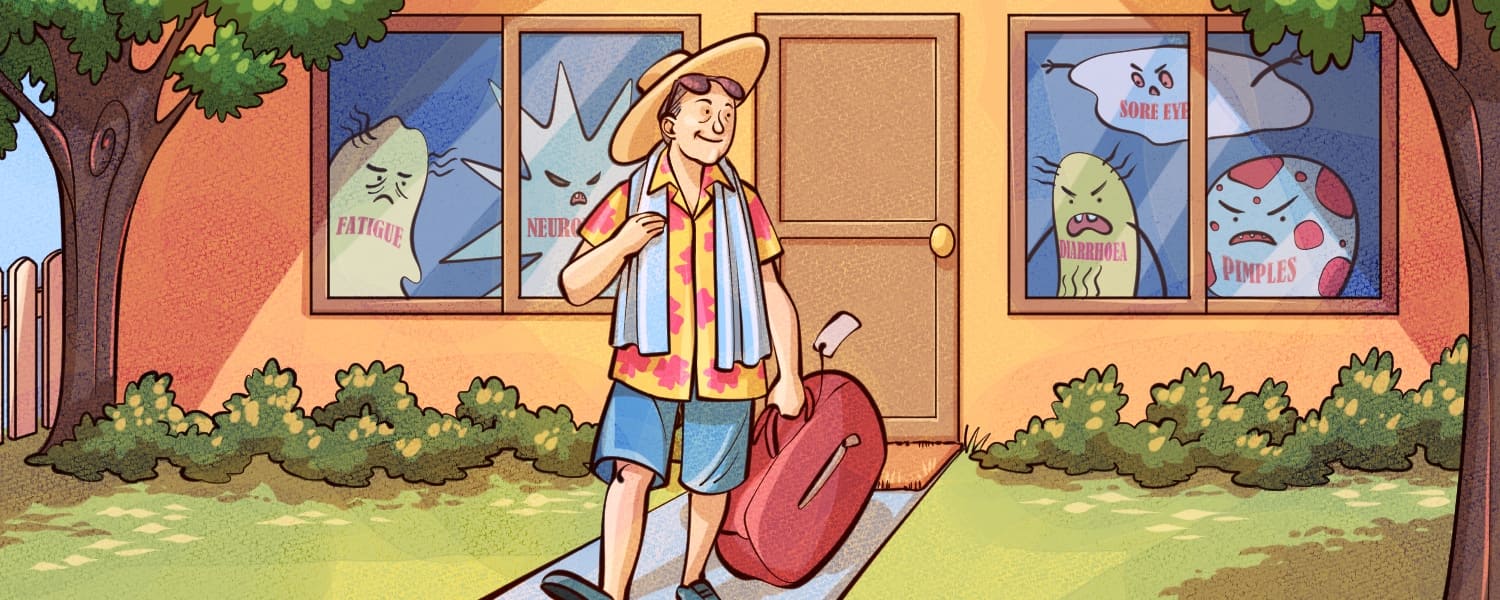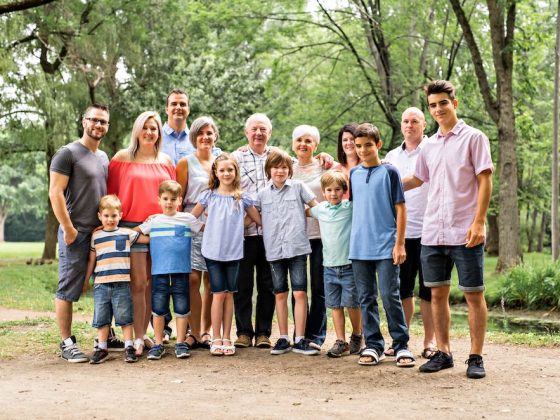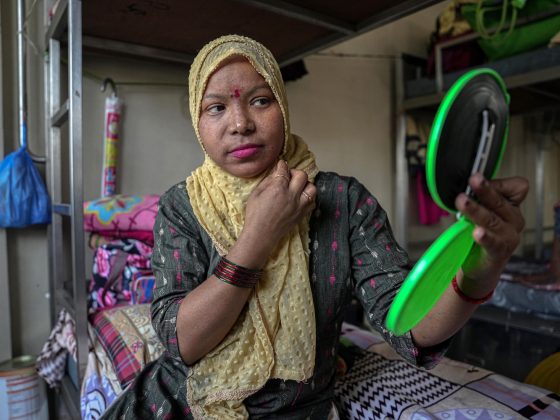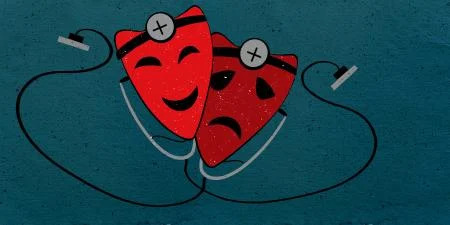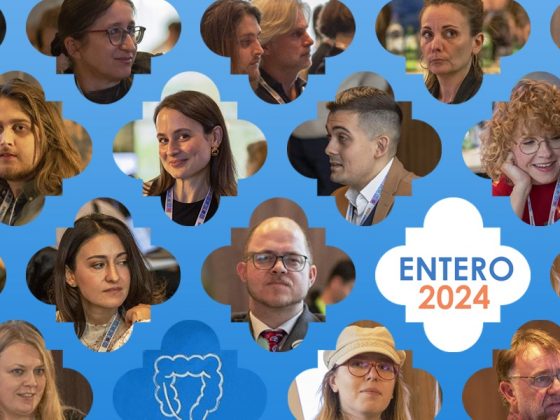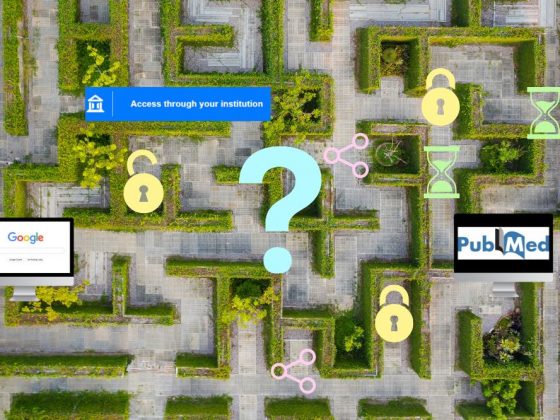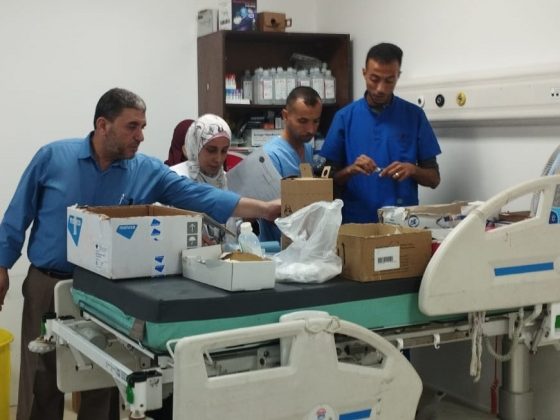The success of treatment cessation in chronic myeloid leukaemia (CML), outlined in an earlier Cancerworld feature, is opening the way for treatment breaks – or cessation with monitoring – to be considered in advanced solid tumours, including breast, kidney, colorectal, and prostate cancers.
In kidney, prostate and colorectal, the focus is on patients taking treatment holidays to allow them to manage severe side effects, or achieve life projects such taking a vacation, or just to feel ‘more like themselves’ for a while.
But in some cancers such as HER2-positive breast cancer, modern targeted treatments – such as the HER2 inhibitor trastuzumab and, more recently, antibody-drug conjugates such as trastuzumab deruxtecan – have shown themselves sufficiently powerful, in some instances, to eradicate all signs of metastatic disease, opening the possibility of stopping treatment altogether. The phase 3 CLEOPATRA trial, for instance, showed that one fifth of subjects with HER2-positive metastatic breast cancer, who were treated with pertuzumab, trastuzumab and docetaxel, had no evidence of disease progression at five years. Such results raise the possibility that a small number of patients may be cured with these powerful agents, making it no longer necessary for them to submit their bodies to the gruelling side effects.
“In metastatic solid tumours, there’s been a widespread dogma that these cancers are incurable and that stopping treatment allows cancers to grow,” says Heather Parsons, a medical oncologist at the Dana Farber Cancer Institute in Boston, and Assistant Professor at Harvard Medical School. “However, with targeted treatments we’re seeing patients with advanced cancers living for decades without any progression of disease, and a few even have no evidence of disease. There is limited data in this area and our issue is now what to do in these situations?”
Both treat holidays and treatment cessation represent entirely different concepts from stopping treatment at the end of life when patients cease to respond to treatment and the focus shifts to palliative care. For both the former scenarios, there is always the possibility to resume treatment if disease progresses.
“With targeted treatments we’re seeing patients with advanced cancers living for decades without any progression of disease”
Fundamental differences between modern targeted treatments and chemotherapy account for the growing interest in treatment holidays and treatment free remission, suggests Janet Brown a medical oncologist from the University of Sheffield, UK. “Chemotherapy commonly involved people taking six courses of treatment and then stopping, but with the newer targeted agents, patients are expected to continue on treatment indefinitely until they progress or experience significant side effects,” she says.
The unremitting nature of targeted treatments, where patients need to take a tablet every day, or have regular hospital infusions, takes its toll. For many people the improved responses obtained with targeted agents come at the expense of a greater burden toxicity. “With the new treatments people with advanced cancers are living much longer, but this also means that they’re experiencing symptoms of toxicity for longer. This changes the dynamic, making it important to give toxicity far greater weighting than with shorter term treatments,” says Brown, who found that some of her patients taking the tyrosine kinase inhibitor sunitinib for advanced kidney cancer requested to ‘take a break’ after becoming weary of side effects (including hand foot syndrome, nausea, vomiting, and changes in bowel habits). This feedback prompted Brown to initiate the STAR study exploring treatment holidays in kidney cancer patients.
Good for patients good for healthcare systems
Taking a break from treatment, whether a treatment holiday or treatment-free remission, brings advantages to both patients and healthcare systems. “A break can allow patients to lead a more normal life, which has a big impact on their quality of life. It enables them to do things that can be impossible on treatment, like taking holidays or returning to work,” says Mark Lawler, Professor of Digital Health at Queen’s University, Belfast.
When rechallenged with the treatment after a break, adds Lawler, there is evidence that tumour cells may become more sensitive to the treatment. “The theory goes that drug withdrawal favours growth of different populations of cells within a heterogenous tumour, leading to the emergence of cells that are not resistant to the therapy that can respond to retreatment,” he explains.
Treatment breaks also deliver health economic benefits. Using health economic modelling and analysis, in a study published in the Journal of Cancer Policy in 2022, Lawler and his team demonstrated that employing a treatment break approach for patients with advanced colorectal cancer treated with cetuximab and chemotherapy would help save up to £1.2 billion annually for NHS England without having any negative effects on a patient’s quality-of-life and survival.
Lawler based his analysis on the COIN-B trial, undertaken by Tim Maughan from the University of Oxford, and published in Lancet Oncology in 2014, which demonstrated that intermittent cetuximab was a safe alternative to continuous cetuximab. In addition to the costs of drugs, Lawler included costs of drug administration, associated patient care, and costs incurred due to toxicities from adverse events.
“Employing a treatment break approach for patients with advanced colorectal cancer… would help save up to £1.2 billion annually”
Lawler’s results were central to the evidence Bowel Cancer UK presented to NHS England to justify the change in bowel cancer treatment policy that occurred in June 2023. Up until that point, the perverse rule was that, if a patient takes a treatment break for longer than six weeks, they would lose their entitlement to paid treatment on the NHS. Patients were therefore deterred from taking treatment breaks for fear of losing their funding.
“The disappointing aspect was that the critical piece of evidence that finally persuaded NHS England to change the rule wasn’t anything to do with patient quality-of-life or the potential to rechallenge the tumour, but the health economic benefits,” says Lawler. “That’s why the analysis we did was so crucial. The other disappointing thing was it took them five years to agree that we were right!”
Monitoring for relapse: new approaches in solid tumours
Solid tumours are undoubtedly more complex than haematological malignancies, raising concerns whether the treatment-free remission concept pioneered in CML is translatable. “In CML there’s just one driver (BCR-ABL), whereas solid tumours have multiple drivers, which can override the inhibition,” says Francois-Xavier Mahon, from the University of Bordeaux, who spearheaded the landmark stopping trials in CML, including Stop Imatinib (STIM1), the RE-STIM study and the EURO-SKI.
Susanne Saussele, from the University of Mannheim, Germany, who together with Mahon was co-principal investigator on the EURO-SKI study, agrees that solid tumours represent a completely different model from CML. “They involve living cells that are constantly dividing, as opposed to stem cells that are more quiescent, and furthermore the tumour microenvironment plays an important role in solid tumours.”
In CML, a major factor facilitating the success of stopping trials has been the ability to monitor minimal residual disease using reverse transcriptase–polymerase chain reaction technology to measure blood levels of BCR-ABL (the fusion gene driving the tumour, which results from a translocation between chromosome 9 and 22). The high sensitivity of the technology for quantitative reverse transcriptase – polymerase chain reaction enables clinicians to rapidly identify any disease recurrence, giving them the confidence that any sign of the disease returning can spotted early, and rapidly addressed by resuming treatment. That level of sensitivity does not currently exist for monitoring solid tumours, where recurrence is primarily monitored visually, using CT or MRI imaging.
“Currently with CT or MRI the smallest amount of cancer we can detect is about a square centimetre, which represents around a billion cells,” says Parsons. “Using this method feels a bit like shutting the stable door after the horse has bolted. We need to be able to do better.”
While liquid biopsies, which detect cancer gene mutations in the blood, do have the potential to offer a non-invasive approach to catching early signs of cancer return, the amount of tumour DNA circulating in the blood at any given time is extremely small, so the current challenge is how to develop tests that are sensitive enough to identify tiny signals.
“Using CT or MRI feels a bit like shutting the stable door after the horse has bolted. We need to be able to do better”
To overcome these problems Parsons is incorporating an innovative new technology into her STOP-HER2 trial, which is currently exploring whether first-line HER2 therapy (any regimen) can be stopped in patients with HER2 positive metastatic breast cancer who have not had any disease progression for three years.
The technology, pioneered by Parsons’ colleague Viktor Adalsteinsson, from the Gertsner Center for Cancer Diagnostics at the Broad Institute of MIT and Harvard, focuses on improving the sensitivity of liquid biopsy for detecting minimal residual disease. The technology, known as MAESTRO (Minor Allele Enriched Sequencing through Recognition Oligonucleotides), offers the potential to identify recurrence earlier by probing specifically for known mutations in an individual patient’s cancer. First, researchers sequence an individual patient’s tumour biopsy to understand the landscape of their mutations. With this information in hand, they can then create specialised molecular probes that will bind to only those tumour-associated sequences of DNA. Scientists add the molecular probes to the cell-free DNA from blood samples, then wash away any unbound DNA, enabling the sequencing machines to pick out the rare cancer mutations from the sample.
In one study on five patients with diffuse large B-cell lymphoma (DLBCL) who relapsed after stem cell transplant, presented at the 2023 ASH meeting, the MAESTRO technology was able to identify circulating tumour DNA 178 days earlier than a PET scan identified a relapse.
“MAESTRO seems to be sensitive to around a few parts per million, which is a big advance on liquid biopsies, which can only identify one part per thousand or per ten thousand,” says Parsons, adding that the main challenge for using the assay in cancer patients is the need to have archival biopsy material available to assay.
To overcome this necessity, Adalsteinsson is taking an alternative approach to detecting minimal residual disease, which uses injectable molecules, known as ‘priming agents,’ that block the ability of enzymes (known as DNases) to break down DNA in the blood. By shifting the balance to the point where the tumour is generating DNA slightly faster than tumour DNA in the blood is being degraded by DNase, the agents have the potential to increase the concentration of DNA in a blood draw allowing it to be more easily detected.
Issues in trial design
Just as the efficacy of a new treatment needs to be demonstrated in a clinical trial, stopping or pausing that treatment also requires a firm evidence base. “The only way to guide patients into making informed decisions is to get good data on what they lose and what they can gain from stopping,” says Betrand Tombal, from the Cliniques Universitaires Saint-Luc in Brussels, who is starting to enrol men with prostate cancer into the EORTC 2238 De-Escalate trial. The trial will explore intermittent treatment with androgen deprivation therapy and androgen receptor pathway inhibitors in men with metastatic prostate cancer who have shown a deep PSA response.
“The only way to guide informed decisions is to get good data on what they lose and what patients can gain from stopping”
In planning stopping studies, solid tumour investigators have learnt important lessons from the CML experience, including the need to demonstrate that, if patients progress off treatment, they can restart therapy with the same response they would have achieved prior to stopping.
Another lesson from CML is the need to support patients. “When you tell patients you are stopping their treatment, there’s a danger that they can feel abandoned. It’s important to make it clear from the beginning that stopping treatment is a treatment in itself, and that you will be there for them following them through the process,” says Tombal. Like many other investigators, he has taken care to involve patient advocates in designing the trials to ensure the trials are acceptable, and that the quality-of-life factors that matter to patients get included as endpoints.
After consulting patients, for instance, both the STOP-HER2 trial and EORTC De-Escalate trial rejected the classic randomisation process. Patients meeting the criteria are instead given the choice about whether they want to stop treatment, and then allocated accordingly. “We didn’t feel it was acceptable to randomise patients. Patients and providers have strong feelings about whether or not they’re willing to stop treatment,” says Parsons.
Watching out for unexpected side effects that can occur as a consequence of stopping treatment is another lesson learnt from the CML experience, where around one-third of patients who stopped taking their TKIs suffered ‘withdrawal symptoms’ in the form of muscle and joint pain. Just because patients are not on a treatment, they have learnt, does not mean they will not experience new side effects.
Finding the funding
Funding of stopping studies remains a major obstacle. Just as with the first stopping trials in CML, the impetus for stopping studies in solid tumours has been investigator led. These are passion projects, spearheaded by independent investigators who have come to appreciate the need to change the status quo after witnessing the burden continual treatment puts on many of their patients, as well as many instances of exceptional deep responses that raise questions over whether it is right to continue toxic treatments where patients are getting questionable benefit.
In most cases the investigators have cobbled together their own funding, approaching government funders (such as the UK NIHR, the French INCa, the US NIH, the European Commission) and research charities. “It’s a big effort to get the funding together. Rather than doing research we’re forced to spend a lot of energy seeking different sources of funding,” says Parsons.
One limitation associated with government funding is that it often means patient enrolment must come entirely from that particular country. “We need to work together globally so that recruitment to these studies can be undertaken faster,” says Brown. Recruitment to the STAR study on treatment holidays took twice as long as would have been needed had they been able to enrol patients with advanced kidney cancer from beyond the borders of the UK, she says.
“Eventually it became a marketing advantage for companies to be able to demonstrate that their drug didn’t need to be taken for life”
Unsurprisingly, perhaps, pharmaceutical companies have not been especially forthcoming with financing stopping trials. But researchers can, again, take heart from the experience in CML, where pharma companies did eventually take on board the importance of stopping trials, including funding studies on dasatinib discontinuation (DADI, First-line DADI trial, D-STOP and DASFREE) and nilotinib discontinuation (STAT2, ENESTFreedom, ENESTSTop and NILst). “Eventually it became a marketing advantage for companies to be able to demonstrate that their drug didn’t need to be taken for life,” says Mahon.
Brown is confident that the same will eventually happen for solid tumours. The field, she believes, is about to undergo a ‘sea change’, where it will become evident to pharma companies that it is in their interest to demonstrate that patients with advanced cancer can take a treatment break. “As drugs become ever more expensive, there may be a QALY gain [a metric used in health economics] if patients are able to stop and restart treatment. The ability to give cancer drugs intermittently could enable them to reach the funding [reimbursement] threshold,” suggests Brown.
One possibility, says Parsons, would be for regulatory agencies, such as the European Medicines Agency and US Food and Drug Administration (FDA), to insist, where appropriate, for stopping studies to be included as part and parcel of drug registration. “It would be wonderful, especially as we give drugs that are both more toxic and more effective, if we could build into registration studies the potential to stop therapy in patients who have benefitted,” she says.
This is the second part of a series on advances in safely stopping treatment for defined or indefinite periods. The first part looked at treatment-free remission in patients with chronic myeloid leukaemia. Two further parts will look at progress towards treatment-free remission in HER2-positive and other subtypes of breast cancer, and building evidence around safely taking treatment holidays in other solid tumours, including prostate, kidney and colorectal cancers.
Illustration by Alessandra Superina.


